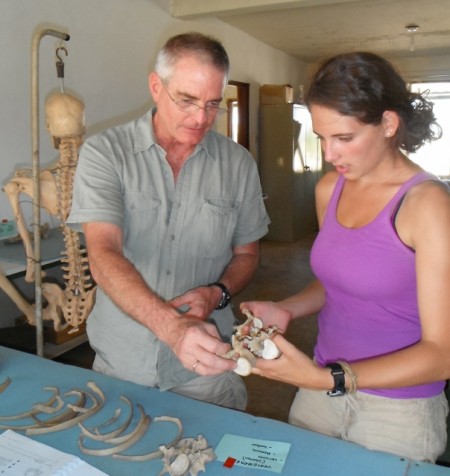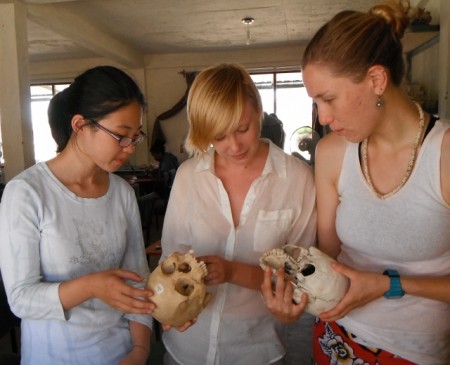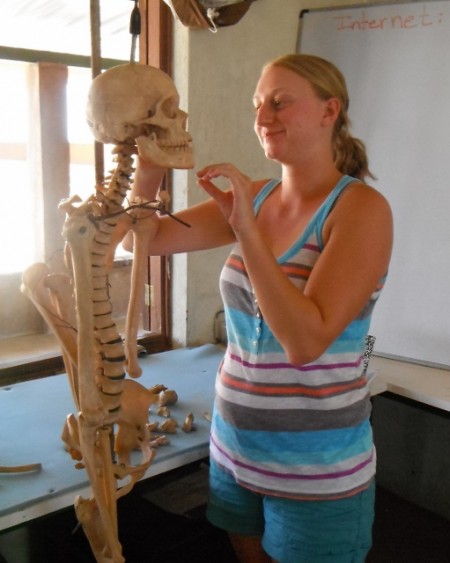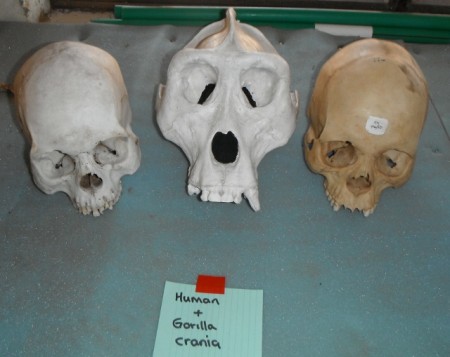Today students learned the basics about human anatomy and how detailed knowledge of bones is crucial in identifying fossils. Human, or other animal fossils, are very rarely found in one piece – most often found are individual bones, bone or skull fragments, or teeth. Bones can tell us much about an organism: its age, health, sex, and sometimes even what it was eating, cause of death, and when it lived. Bones and joints can also tell us about the type of environment the organism lived in and how it moved. Skeletons of animals that swing through tree canopies (e.g. orangutans) differ from animals that walk on all fours on the ground (e.g. baboons) and from species that are bipedal (walk upright on two legs) such as humans.
- Robert and Mark are testing their knowledge on a bone quiz










